Saskatoon Berry Disease Management: Protect The Flowers From Rain Showers
For the most important diseases, protection of the bloom stage from infection by plant pathogens is one of the most important management decisions you can make towards ensuring a productive year.
A simple way to sum up Saskatoon Berry Disease Management is the phrase: Protect the flowers from rain showers. In other words, employ practices that reduce the surface wetness provided from rain periods that cause disease. The wetness period can be reduced through adequate spacing of plants, removal of suckers that can increase canopy density and lengthen drying times, and watering the plants at the ground as opposed to overhead irrigation. These practices are not always enough to prevent a disease outbreak, however. Application of a recommended fungicide to ensure the flowers are protected from disease causing fungi is often necessary in Manitoba.
Entomosporium Leaf And Berry Spot
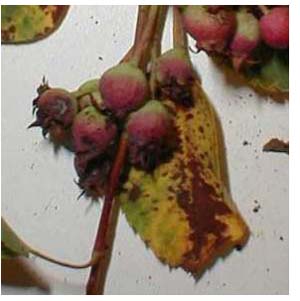
Plants that are left unprotected during a rainfall, are at great risk of severe crop losses. If a disease outbreak caused crop losses last year in your orchards (in 2005, Entomosporium Leaf and Berry Spot was a big problem in many orchards) favourable conditions this year will likely mean problems, if no successful attempts at management are made. Once the flowers and fruit are infected, those fruit are unmarketable.
Due to the influence of environmental factors on plant development, the time and duration of the bloom period will vary from year to year and from location to location. The bloom period, which extends from the green tip stage to petal fall (descriptions of the growth stages can be found at the end of this article), is the best time to manage a number of Saskatoon berry diseases (Remember—Protect the Flowers from Rain Showers). Fortunately, there is also little foliage present at this time, and good spray coverage is relatively easy to achieve.
Timing for fungicide applications is often based on an estimate of when a certain proportion of the flower buds are fully open. For purposes of pest management, the term "full bloom" refers to the point at which the majority of flowers in the orchard are fully open; by this time some will be past full bloom, while others will be at earlier stages.
It is recommended that fungicide applications be avoided when the flowers are in full bloom, to avoid any problems during pollination.
For Entomosporium Leaf And Berry Spot (Entomosporium Mespili), Saskatoon-Juniper Rust (Gymnosporangium Clavipes) and Powdery Mildew (Podosphaera Clandestina) fungicide control options please refer to the MAFRD Fruit Protection Guide or PMRA Pesticide Label Search website: http://pr-rp.hc-sc.gc.ca/ls-re/index-eng.php (french version at: http://pr-rp.hc-sc.gc.ca/ls-re/index-fra.php ).
Description Of Growth Stages:
| Green Tip - first leaves are still expanding, flowers remain green, no visible portion of the petals yet. Green of sepals only visible part of the flower |  |
| White tip- The white tips of the petals are just becoming visible | 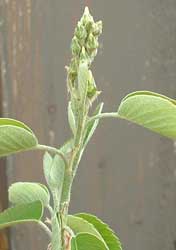 |
| Tube - At base with flower petals elongated and much more apparent, but still not opened. | 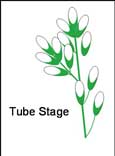 |
| Balloon - Petals and receptacle increasing in size, individual petals beginning to be noticed, flowers are not opened yet. | 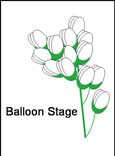 |
| Full bloom - Petals are open, internal flower components visible | 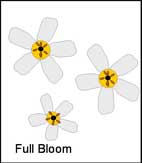 |
| Petal fall - Petals have started to shrivel and fall away from the flower. | 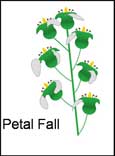 |
| Fruit Set - Petals are gone leaving a green cup shaped structure. | 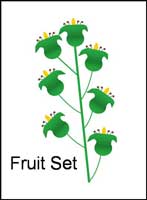 |
| Green berry/Fruit - no longer cupped shaped, berries are small green and rounded. Small green- Fruit taking on a rounded appearance, still green in colour (intermediate stage between fruit set and Green berry |
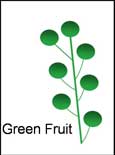 |
References:
St. Pierre, R. 1999. Growing Saskatoons: A Manual for Orchardists. 5th Edition. University of Saskatchewan.

